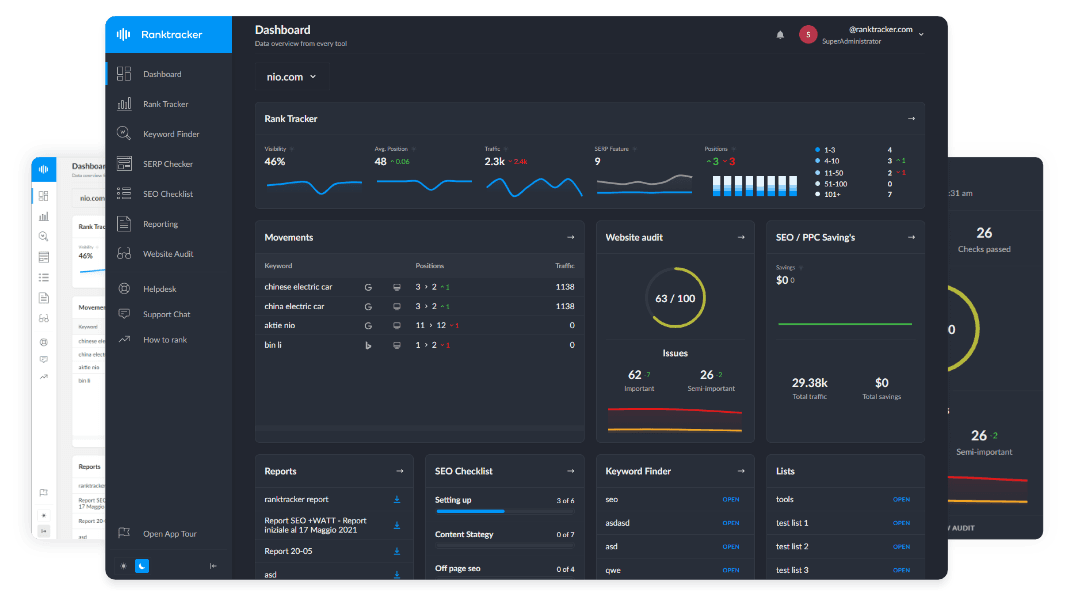Intro
The Best AI Tools for Content Creators in 2025 are revolutionizing how we produce, edit, and distribute content through sophisticated multi-tool workflows that combine text generation, visual creation, and video production. Modern content creators are no longer limited to single-purpose applications but can leverage powerful ecosystems that include ChatGPT for writing, advanced image generators, video creation platforms, and comprehensive solutions. This integrated approach enables creators to produce high-quality, multi-format content at unprecedented speed and scale.
The Core AI Stack for 2025 Content Creators

Today's content creation landscape demands a diversified toolkit where different AI models work in harmony to maximize creative output. The most successful creators are building workflows that leverage the unique strengths of various AI platforms, creating synergistic effects that amplify productivity and creative possibilities.
AI Writing & Research Assistants
The foundation of any content creator's AI arsenal centers on intelligent writing assistants that handle everything from initial ideation to final editing. ChatGPT leads the market with its conversational interface and broad knowledge base, while Claude excels at longer-form content and nuanced analysis. Google's Gemini brings real-time web access and multimodal capabilities to the table.
Key features that define top-tier writing assistants include:
- Ideation and brainstorming - Generate content concepts, headlines, and creative angles
- Outline creation - Structure complex articles, scripts, and presentation materials
- Fact-checking and research - Verify information and provide supporting evidence
- Tone and style adaptation - Match brand voice across different content formats
- Grammar and clarity optimization - Polish drafts for professional publication
- SEO optimization - Integrate keywords naturally while maintaining readability
Image & Graphic Generators
Visual content creation has been transformed by AI image generators that produce professional-quality graphics in seconds. These tools have evolved from basic image synthesis to sophisticated design platforms that understand context, style, and brand requirements.
| Tool | Style Specialization | Cost Model | Output Format |
| DALL·E 3 | Photorealistic, artistic | Pay-per-use | PNG, JPG |
| Midjourney | Artistic, stylized | Subscription | PNG, WebP |
| Canva AI | Business graphics, templates | Freemium | PNG, PDF, SVG |
| Adobe Firefly | Commercial-safe, branded | Subscription | Multiple formats |
AI Video Creation & Editing
The video creation space is experiencing rapid innovation with tools that democratize professional video production. Adobe Firefly's mobile and video capabilities are expanding creative possibilities for on-the-go content creators, while Google's Veo 3 technology pushes the boundaries of text-to-video generation with improved motion consistency and visual fidelity.
Common use cases driving adoption include:
- Social media content - Quick videos for Instagram, TikTok, and YouTube Shorts
- Product demonstrations - Animated explanations and feature highlights
- Educational content - Visual learning materials and tutorials
- Marketing campaigns - Promotional videos and advertisement creation
- Personalized messaging - Custom video content for different audiences
Integrating Tools for a Seamless Workflow
The true power of AI content creation emerges when multiple tools work together in coordinated workflows. Rather than using isolated applications, successful creators are building integrated pipelines that move content seamlessly from concept to publication across different formats and platforms.
From Script to Scene: Combining Writing, Visual, Video Tools
Creating comprehensive content campaigns requires a systematic approach that leverages each tool's strengths while maintaining consistency across formats. The most effective workflow follows these integrated steps:
- Script Development - Use ChatGPT or Claude to generate initial scripts, outlines, and key messaging
- Visual Asset Creation - Generate complementary images and graphics using AI Chat Jadve to maintain visual consistency
- Video Production - Transform static assets into dynamic video content using AI animation and editing tools
- Content Optimization - Refine all materials for specific platforms and audience segments
- Distribution Coordination - Ensure synchronized release across multiple channels
Managing Assets Across Tools
Effective multi-tool workflows require robust asset management strategies that prevent version conflicts and maintain creative consistency. Modern content creators must develop systems that track assets across platforms while preserving quality and metadata.
Best practices for cross-platform asset management:
- Standardized naming conventions - Use consistent file naming across all platforms
- Cloud-based synchronization - Maintain real-time access to latest versions
- Version control protocols - Track changes and maintain edit history
- Format standardization - Establish consistent output specifications
- Backup and recovery systems - Protect against data loss and corruption
- Collaborative permissions - Control team access and editing rights
Advanced Use Cases: Repurpose & Scale Content
The most sophisticated content creators are using AI tools not just for creation but for intelligent content repurposing that maximizes the value of every piece of original content. This approach allows creators to maintain consistent output while reaching diverse audiences across multiple platforms and formats.
Social Media Multipurpose Content
Modern social media strategy requires platform-specific content that maintains brand consistency while optimizing for each channel's unique requirements. AI tools enable creators to generate multiple format variations from a single source material, ensuring efficient resource utilization while maximizing audience reach.
The process involves using AI image editor tool for static social posts, video AI for dynamic stories and reels, and writing AI for platform-optimized captions that drive engagement. This approach ensures that creators can maintain active presences across Instagram, TikTok, LinkedIn, and Twitter without multiplying their workload proportionally.
Localization & Variant Generation
Global content creators are leveraging AI translation and cultural adaptation tools to reach international audiences without compromising quality or cultural sensitivity. Gemini's multilingual capabilities excel at nuanced translation that preserves meaning and tone, while visual AI tools like Jadve can generate culturally appropriate imagery for different markets.
| Language | Primary AI Tool | Visual Adaptation | Cultural Considerations |
| Spanish | Gemini Pro | Jadve localization | Regional dialect variations |
| French | Claude multilingual | Canva templates | Cultural color preferences |
| German | ChatGPT Plus | Midjourney styles | Formal communication norms |
| Japanese | Gemini Advanced | Adobe Firefly | Visual hierarchy differences |
| Portuguese | Claude Sonnet | Custom AI imagery | Brazilian vs European variants |
Ethical, Legal & Performance Considerations
As AI content creation becomes mainstream, creators must navigate complex ethical and legal landscapes while maintaining high-quality standards. Responsible AI use requires understanding copyright implications, ensuring output quality, and maintaining transparency with audiences about AI assistance.
Copyright-Safe Training & Output
Adobe Firefly's approach to using only licensed training data represents the gold standard for commercially safe AI content creation. This model eliminates concerns about copyright infringement while providing creators with confidence in their commercial use rights.
Essential copyright considerations include:
- Training data transparency - Understand how AI models were trained
- Commercial use rights - Verify licensing for business applications
- Attribution requirements - Follow proper crediting protocols
- Fair use limitations - Understand boundaries of AI-assisted creation
- Platform-specific policies - Comply with distribution channel requirements
Ensuring Content Quality & Human Oversight
Despite AI sophistication, human oversight remains crucial for maintaining quality, accuracy, and brand alignment. Successful creators implement systematic review processes that combine AI efficiency with human judgment and creative direction.
Quality assurance checklist for AI-generated content:
- Fact verification - Cross-reference AI claims with authoritative sources
- Brand consistency - Ensure voice, tone, and messaging alignment
- Cultural sensitivity - Review for potential bias or inappropriate content
- Technical accuracy - Verify specialized information and terminology
- Legal compliance - Check for copyright, trademark, or regulatory issues
- Audience appropriateness - Confirm content matches target demographics
Future Trends: What's Next in AI Content Tooling
The AI content creation landscape continues evolving rapidly, with emerging technologies promising even greater capabilities and accessibility. Understanding these trends helps creators prepare for next-generation workflows and maintain competitive advantages in an increasingly AI-driven market.
AI on Mobile: Creativity On-the-Go
Adobe Firefly's mobile launch represents a significant shift toward mobile-first AI creation, enabling creators to produce professional-quality content anywhere. This trend democratizes content creation by removing traditional barriers of expensive software and powerful hardware requirements.
Mobile AI benefits include:
- Location-independent creation - Produce content during travel or remote work
- Real-time content generation - Respond immediately to trending topics
- Simplified workflows - Streamlined interfaces optimized for touch interaction
- Integrated sharing - Direct publication to social platforms
- Collaborative editing - Team-based creation on portable devices
Real-Time, Adaptive Content Generation
Interactive AI platforms like Rumi Labs are pioneering adaptive content systems that respond dynamically to audience feedback and engagement patterns. These systems represent the future of personalized content that evolves based on user interaction and preference data.
Potential applications for adaptive AI include:
- Dynamic video personalization - Content that changes based on viewer behavior
- Interactive storytelling - Narratives that adapt to audience choices
- Real-time trend integration - Content that incorporates current events automatically
- Personalized visual styles - Graphics that match individual aesthetic preferences
- Contextual content optimization - Materials that adapt to the viewing environment
Choosing Your 2025 Content Toolkit
Selecting the right combination of AI tools requires careful evaluation of specific needs, budget constraints, and workflow requirements. The most effective approach involves systematic testing and gradual integration rather than wholesale adoption of new platforms.
Tool Comparison & Selection Criteria
| Platform | Multimodal Support | Monthly Cost | Integration Ease | Primary Strength |
| AI Chat Jadve | Text + Image | $29–99 | High | Unified interface |
| Jasper | Text focused | $49–125 | Medium | Marketing copy |
| Canva Pro | Design + AI | $15–40 | High | Visual templates |
| Synthesia | Video creation | $30–90 | Medium | Avatar videos |
| Adobe Creative | Full suite | $60–160 | High | Professional tools |
Building Your Multi-AI Workflow
Implementing an effective multi-AI workflow requires systematic planning and gradual optimization. The most successful creators follow structured approaches that minimize disruption while maximizing creative potential.
Your integration roadmap should include:
- Needs Assessment - Identify content gaps and workflow inefficiencies
- Tool Evaluation - Test platforms with pilot projects and small investments
- Workflow Integration - Connect tools through APIs and shared file systems
- Team Training - Develop competencies across your chosen AI stack
- Performance Optimization - Refine processes based on output quality and efficiency metrics
- Continuous Adaptation - Stay current with platform updates and new capabilities
Conclusion
The convergence of AI writing assistants, image generators, and video creation tools is creating unprecedented opportunities for content creators who embrace integrated workflows. Success in 2025 requires moving beyond single-tool thinking toward strategic AI orchestration that leverages each platform's unique strengths while maintaining human creativity and oversight. Exploring comprehensive solutions can provide the unified approach many creators need to streamline their multi-tool workflows. The future belongs to creators who combine AI efficiency with strategic thinking, ethical considerations, and genuine human insight to produce content that truly resonates with their audiences.

